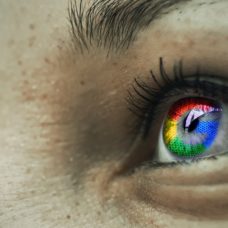Norwegian company Beck Engineering recently developed a 3D fish face scanner. Now, the fish-farming company Cermaq Group AS plans to implement the technology in Norwegian salmon pens.
Facial recognition technology might not be up to snuff for some things. For instance, most police facial recognition software programs have very high failure rates.
In our modern society, you can find advanced tech and research in the most surprising places.
While some have opinions about how AI can improve facial recognition technology, one Norwegian company thinks it can benefit fish farmers instead.
First showcased in 2017, the technology dates back to about 2013. This unlisted YouTube video showcases how the underwater laser drone worked even back then.
Now, the company wants to use the 3D face scanner to protect fish against sea lice.
How Beck Engineering Uses Lasers to Zap Lice
Fish may all look the same to the average onlooker. But all fishes have unique faces, and Beck Engineering can help identify each one. Their 3D scanner identifies distinct patterns in the spots around the eyes, gills, and mouths.
The company, spearheaded by Esben Beck, wants to help fight sea lice in fish farms.
Stereo cameras in the system can laser in onto a single louse if desired. The system then emits a laser-beam known as the Stingray to shoot the bug. Despite eliminating thousands of lice per day, all fish remain unharmed.
This innovation provides important and necessary protection from sea lice for fish.
These marine ectoparasites attach themselves to sea trout and salmon to feed. The lice tend to feed off protective external mucous membranes, tissues, and blood.
While lice also feed on wild salmon, the densely packed nature of salmon farm pens attracts more lice. These farm-raised fish also can’t roam as much as their wild counterparts. This means that lice have 50,000 – 150,000 fish to feed on.
But the lasers don’t function all by themselves. They serve as part of a system including a camera-controlled underwater laser drone and software.
Not the Only Fish Face Scanner in Town
Known also as “optical delousing”, lice elimination via laser is a solution to what, some say, is a self-inflicted conundrum. After all, if we didn’t hoard fish in pens, would so many of them be affected by the sea lice?
That’s another issue, unfortunately, but the 3D face scanner tech used to solve the problem remains a worthwhile achievement.
In fact, Cermaq Group AS plans to use the technology for Norway’s coastline. They hope to prevent the spread of sea lice in the global fishing industry — valued around or above $1-billion USD each year.
Harald Takle, head researcher at Cermaq, spoke to Bloomberg about how it works. He said that they can “build a medical record for each individual fish.” The working title for the project is “iFarm” and it brings mass surveillance to the fish world.
This is not an isolated example of modern software being put to use in agriculture. Other industries, including American agribusiness, are investing heavily in modern tech.
Cargill Inc. works with an Irish startup on its own facial-recognition system that monitors cows. Farmers can adjust feeding schedules according to data to augment milk production.
Like Cermaq, Cargill also wants to apply this technology to aqua farms.
Projected numbers suggested that, with systems like Stingray, businesses could cut down mortality rates by 50 – 75%. The solution also avoids pesticides and offers more reliability than other non-chemical solutions such as warm-water baths.

















Comments (0)
Least Recent